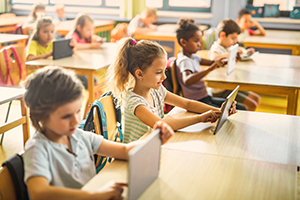11/29/2021
How to Create Schools that Support Multilingual Students
From the desk of Dr. José A. Viana, Senior Advisor, Education Partnerships at Lexia
Bio: Dr. José A. Viana is a former assistant deputy secretary in the office of English Language Acquisition at the Department of Education.
New research from the Department of Education reveals that underserved students experienced a disproportionate burden from the pandemic. The research also confirms that social, emotional, cognitive, and academic development—as well as cultural identity—are all connected. To improve students’ academic outcomes, education leaders and others entrusted to support multilingual students must nurture each of these areas with an asset-based approach that is personalized to meet the needs of each student returning to school.
In my recent featured article in SmartBrief, I discussed some of the ways we can create schools to support multilingual students both academically and emotionally. I also shared some of my ideas to help multilingual students experience success, particularly in the wake of the pandemic.
Here are three ways that schools can support multilingual students’ success:
1. Lean into the innovation generated by the pandemic.
The pandemic’s disruptions have prompted innovation in education. We have narrowed the digital divide, improved social-emotional supports, and collaborated with families to support students’ learning. Now is the time to lean into this innovation and continue the momentum to implement strategies that accelerate academic growth, such as tutoring, summer school, after-school instruction, extended school hours, and various online programs. Supporting social-emotional learning (SEL) is also key, as students each have a unique experience that requires individualized support to help them achieve success.
2. Move to an asset model mindset.
Our goal is to treasure each learner for the superpower they bring to the classroom instead of labeling them by the skill they lack. This asset-model mindset could completely transform learning for multilingual students, improving Emergent Bilingual achievement and maintaining learner engagement. By utilizing a culturally responsive pedagogy, teachers can find ways to connect new information to students’ current background knowledge and present it in ways that are considerate of students’ natural learning pathways.
3. Leverage family involvement.
Teachers cannot address the loss of learning and instructional time on their own. Families had a critical role in students’ learning while it was remote, and many families are still motivated to collaborate with teachers to support their child’s return to the classroom. Educators should encourage continued family involvement by celebrating students, their families, their heritage, and their hard work.
Actively engaging students in meaningful and culturally relevant learning experiences rooted in high academic expectations for all students will improve academic outcomes for multilingual students. These methods will foster learning as we address the loss of learning and instructional time, in addition to supporting student well-being as our learners recover from the emotional effects of the pandemic.
Read more about how we can support multilingual students' learning in this education insight by my colleague, Maya Goodall: Level Up: Embracing Culturally Responsive and Sustaining Pedagogy for Emergent Bilingual Students.

